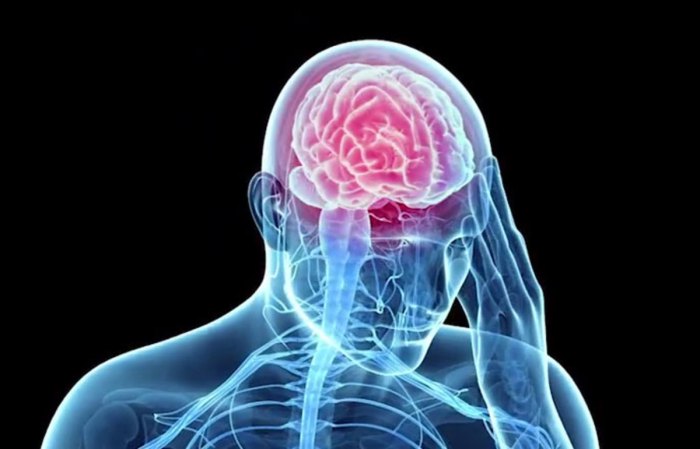Traumatic brain injury hesi case study – Delving into the intricate world of traumatic brain injury (TBI), this HESI case study embarks on a journey to unravel the complexities of this prevalent condition. Through a meticulous examination of a real-life case, we aim to shed light on the pathophysiology, management strategies, and multifaceted implications of TBI, empowering healthcare professionals with a deeper understanding and enhanced patient care.
As we delve into the intricacies of TBI, we will explore its diverse manifestations, ranging from contusions to diffuse axonal injuries, and dissect the underlying mechanisms that contribute to its devastating consequences. Furthermore, we will delve into the principles guiding acute management, surgical interventions, and the multifaceted rehabilitation therapies employed to restore function and optimize outcomes.
Patient History and Assessment

A 25-year-old male presents to the emergency department after a motor vehicle accident. He was the driver of the car and was ejected from the vehicle after it rolled over. He is alert and oriented to person, place, and time.
His Glasgow Coma Scale (GCS) score is 15. He has a laceration on his forehead and complains of headache and nausea. He has no past medical history and is not taking any medications.
Diagnostic Tests
A CT scan of the head shows a small subdural hematoma in the left frontal lobe. An MRI of the brain shows diffuse axonal injury in the white matter of the frontal and temporal lobes.
Pathophysiology of Traumatic Brain Injury

Types of Traumatic Brain Injuries
Traumatic brain injuries (TBIs) are classified into two main types: focal injuries and diffuse injuries. Focal injuries are caused by a direct impact to the head, such as a blow to the head with a blunt object. They can result in contusions, lacerations, or hematomas.
Diffuse injuries are caused by a shaking or rotational force to the head, such as a whiplash injury. They can result in diffuse axonal injury (DAI), which is damage to the axons of neurons.
Pathophysiological Mechanisms
The pathophysiological mechanisms involved in TBI are complex and not fully understood. However, several key mechanisms have been identified, including:
- Release of neurotransmitters: TBI can cause the release of excitatory neurotransmitters, such as glutamate, which can lead to excitotoxicity and neuronal death.
- Excitotoxicity: Excitotoxicity is a process by which neurons are damaged or killed by the excessive activation of glutamate receptors. This can lead to cell death and inflammation.
- Inflammation: TBI can also trigger an inflammatory response, which can lead to further damage to the brain.
Potential Long-Term Consequences
The potential long-term consequences of TBI can vary depending on the severity of the injury. Some common consequences include:
- Cognitive impairment
- Memory loss
- Mood disorders
- Physical disabilities
Treatment and Management
Acute Management, Traumatic brain injury hesi case study
The acute management of TBI involves stabilizing the patient and preventing further injury. This includes:
- Airway management
- Fluid resuscitation
- Intracranial pressure monitoring
Surgery
Surgery may be necessary to treat some types of TBI, such as craniotomy to evacuate a hematoma.
Rehabilitation
Rehabilitation is an important part of the treatment of TBI. It can help patients to improve their physical, cognitive, and emotional function. Common types of rehabilitation therapies include:
- Physical therapy
- Occupational therapy
- Speech therapy
Nursing Considerations

Nursing Responsibilities
Nurses play a vital role in the care of patients with TBI. Their responsibilities include:
- Monitoring vital signs
- Assessing neurological status
- Providing emotional support
Patient Education and Family Involvement
Patient education and family involvement are important aspects of the care of patients with TBI. Nurses can help patients and their families to understand the injury and its potential consequences. They can also provide support and resources to help patients and their families cope with the challenges of TBI.
Ethical Considerations
Ethical considerations are important in the care of patients with TBI. These considerations include:
- End-of-life care
- Decision-making
Case Study: Traumatic Brain Injury Hesi Case Study
Patient History
A 16-year-old male presents to the emergency department after being hit by a car while riding his bicycle. He is unconscious and has a GCS score of 8. He has a large laceration on his forehead and multiple bruises on his body.
He has no past medical history and is not taking any medications.
Assessment
A CT scan of the head shows a large subdural hematoma in the left frontal lobe. An MRI of the brain shows diffuse axonal injury in the white matter of the frontal and temporal lobes.
Treatment
The patient is intubated and placed on mechanical ventilation. He is given mannitol to reduce intracranial pressure. He undergoes surgery to evacuate the subdural hematoma.
Outcomes
The patient wakes up from surgery and is able to follow commands. He is discharged from the hospital after two weeks. He continues to receive rehabilitation therapy and is making good progress.
Challenges
The challenges in managing this case included the patient’s severe head injury and the need for surgery. The patient also had a difficult time with rehabilitation due to his cognitive deficits.
Successes
The successes in managing this case included the patient’s good recovery from surgery and his progress in rehabilitation. The patient is now able to live a full and active life.
Detailed FAQs
What are the common symptoms of TBI?
Symptoms of TBI can range from mild to severe and may include headache, nausea, vomiting, confusion, disorientation, memory loss, difficulty concentrating, and changes in mood or behavior.
How is TBI diagnosed?
TBI is diagnosed based on a combination of factors, including the patient’s history, physical examination, and imaging studies such as CT scans or MRIs.
What are the long-term effects of TBI?
The long-term effects of TBI can vary depending on the severity of the injury and may include cognitive impairment, memory loss, mood disorders, and physical disabilities.